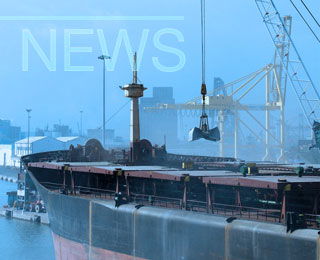Despite rather normal volumes on the market this week people are getting a bit nervous as rates, however, have been on the rise, which could signal a stronger winter upturn than initially expected. On the industry front, steel makers and miners are preparing themselves for a cut-throat battle on the iron ore price settlement for 2006. The supply side can argue that demand is still rising strongly with Chinese steel production growing 25 per cent a year, but steel mills can put in the balance the huge amount of money miners have injected in their production to ease the pressure a bit. Given the current context there will be a lot of resistance from producers to lower their price expectations. In addition, steel oversupply is looming in China and its weight, that still has to be precisely measured, could have an impact on negotiations. This has already been felt this week as miners shares values have recorded their steepest fall since Sept. 11th 2001 on the Australian stock exchange leading to market comments like "A lot of the rise we’ve seen in the last quarter – and we’ve had a very strong quarter – was led by the resources. So they are certainly the ones that have led the fall" "There is across-the-board profit-taking in the stocks". The end of holidays in Asia should tell us a bit more about the direction markets will take.
Despite a slow week due to the Chinese holidays, the Capesize market firmed as expected and gained more than US$4000 on the index 4 T/C routes from mid 44,000’s to high 48,000’s level. Steady demand in both coal and iron ore and fewer prompt vessels, especially in the Atlantic, drove the rates higher and market players expecting further increases with the Chinese back to work. Several vessels were fixed for short periods indicating the same expectations, but for longer periods the gap between the rate ideas of the owners and charterers is still too big.
The Pacific Panamax market stabilised last week, which was partly due to the Chinese holidays, but also due to a lack of new stems ex NoPac and Australia. The higher rates paid for certain trades were usually caused by a spot positional advantage or due to vessels missing cancelling. Richards Bay was a bit more active and some charterers found themselves a little over-exposed. The Atlantic market was the most positive of the week with steady rises for both transatlantic business and fronthaul, where modern vessels obtained in excess of US$30,000 per day. Going forward, sentiment is positive still for Q4 but most are cautious beyond that stage.
The Handymax market continued to improve worldwide with even some areas getting under pressure. Despite the holidays in China the Far East took a u-turn thanks to the increase of stems out of Australia to feed hungry Asian economies. India remains in the lacklustre although Supramax were able to achieve rates in the region of US$17,000 for trips out of the East Coast to the Far East with iron ore. So far the Chinese buyers have been away, therefore everybody is now closely watching the West Coast that will no doubt set the pace for the coming months. The Atlantic experienced healthy rates, Supramax achieved high-teens for Continent/Med trips and almost mid-twenties for trips to the East. The coming week could see further improvements from the Continent. South American sugar stems are not plentiful though owners remain selective in their destinations. The US Gulf almost wrote off the typhoon effects and ships are attracting as much as mid-twenties for trips to the East.


Source: Barry Rogliano Salles, Shipbrokers, Paris
